Winter is a perfect time for the beach and for collecting seashells
Florida Fish & Wildlife Conservation Commission sent this bulletin at 01/03/2019 11:20 AM EST
(Having trouble viewing this email? View it as a Web page.)
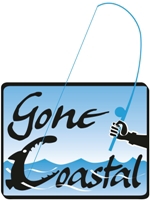
“Gone Coastal” column
By Amanda Nalley
Suggested Tweet: Winter is great for finding seashells: https://content.govdelivery.com/accounts/FLFFWCC/bulletins/22610af #Florida
Winter is a perfect time for the beach and for collecting seashells
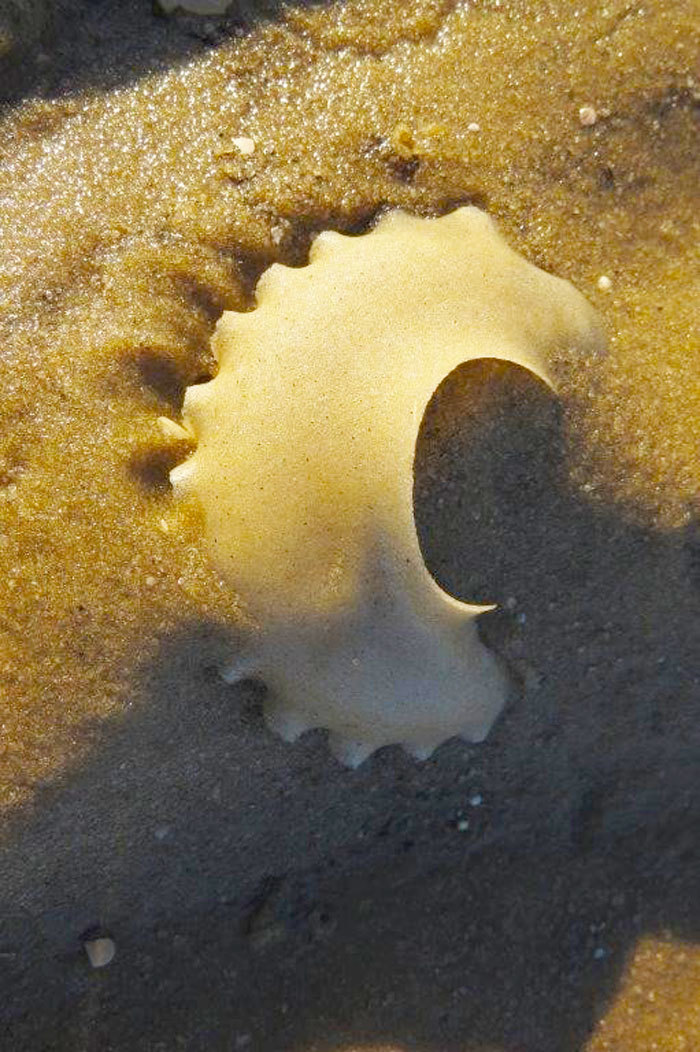
Moon snail egg casing. FWC photo by Karen Parker.
When most people think of Florida’s sandy beaches, they think warm, sunny summer. But what the locals already know is that winter at the beach has tons to offer.
The sand and water may be cold, but it’s a perfect time for looking for seashells.
Maybe it’s because less people are on the beach, or maybe it’s the cold weather and winter storms washing them ashore, but the beach always seems full of seashells and other great finds during the winter months.
As a former island dweller, seashells have become an integral part of my home decorating scheme. They make great containers for Q-tips, candles and jewelry. Some act as decoration atop a cabinet, while others have been turned into craft projects such as a necklace or windchime. Little jars of sharks’ teeth collected throughout the years are tucked away. I even have a shell from my daughter’s first trip to the beach, labeled with the date. A little reminder of paradise.
While collecting is fun, leaving behind seashells and other marine organisms can also benefit our beaches, which is why I always limit what I take. Shells provide protection for creatures such as hermit crabs and can be hiding places for small fish. They also help stabilize beaches and anchor seagrass.
But if you do want to take home a few souvenirs, it’s important to know there are some rules when it comes to recreational seashell collection on Florida’s beaches.
The major thing to keep in mind when you are collecting is, if it’s dead, it most likely is OK to keep.
Do not keep anything that is federally protected (i.e. sea turtles, sawfish or parts thereof).
If a seashell has a living organism inside it or is a living organism (think sand dollars and starfish), you must have a Florida saltwater fishing license (unless exempt) and you must adhere to state and local limits for that species.
It’s also good to know that there are a few species prohibited from harvest, such as the Bahama starfish and live queen conch. You may collect queen conch shells when the shells do not contain any living queen conch at the time of collection.
Special rules also apply if you are collecting in Lee or Manatee counties.
To learn more about FWC’s regulations on recreational seashell collecting, visit MyFWC.com/Marine and click on “Recreational Regulations” and “Sea Shells.” For a fishing license, visit GoOutdoorsFlorida.com.
My top favorite beach finds:

Sea beans. FWC photo by Rich Abrams.
Sea Beans: I love that these rare finds often illicit a “whoa, what is that” from fellow beachgoers. Sea beans or drift seeds are common names for a variety of seeds that frequently wash up on the beach. Our ocean currents are amazing, and sea beans are proof of that. Many of these seeds come from faraway places, such as the Amazon River.
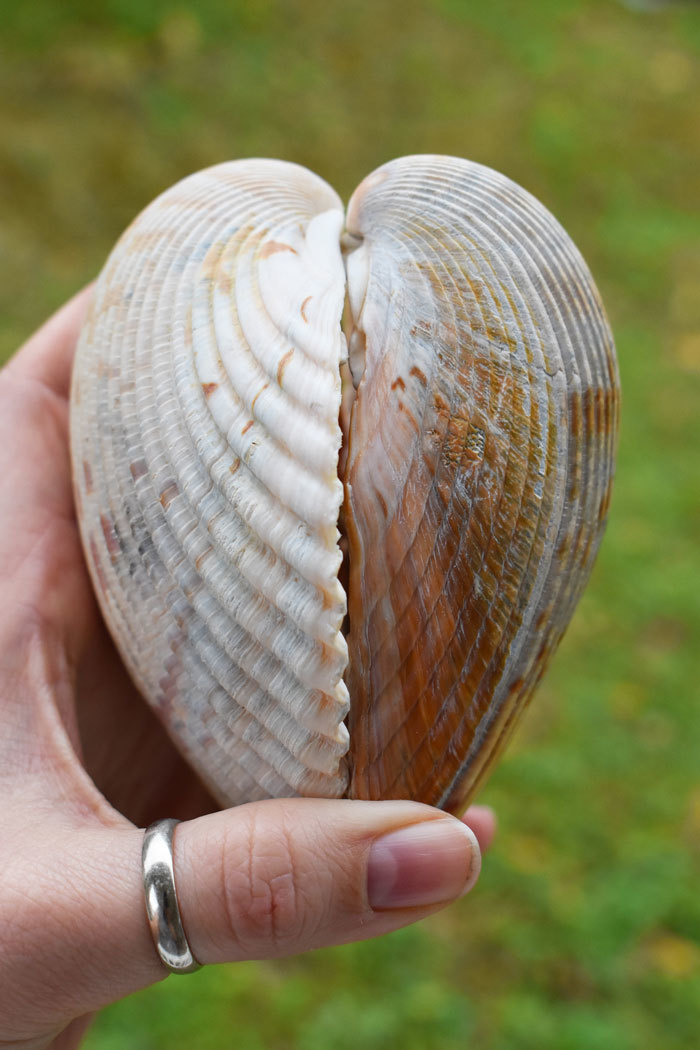
Cockle shells. FWC photo by Amanda Nalley.
Cockle shells: These beach show-stoppers are often the size of your hand and strong enough to remain in one piece, which make them great for collecting. It’s also always “warmed the cockles of my heart” that the two shells of this bivalve form a heart shape when whole.
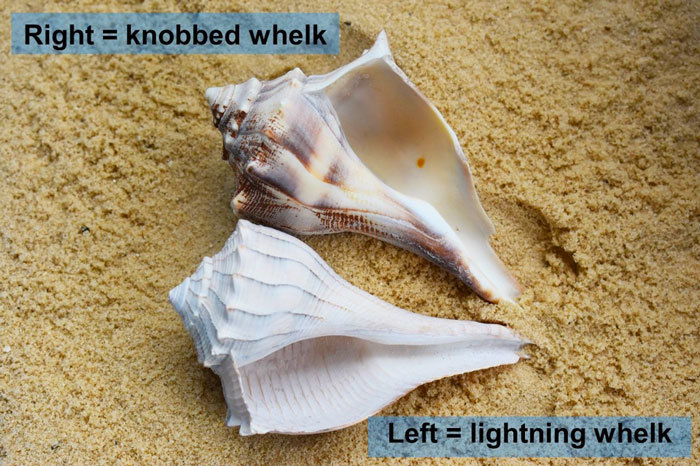
Lightning whelk versus knobbed whelk. FWC photo by Amanda Nalley.
Lightning whelk vs. knobbed whelk: I love a good whelk. They are big, beautiful, strong enough to not easily break and look great on a shelf. My favorite beach party whelk trick is showing people the difference between a lightning whelk and a knobbed whelk. Lightning whelks open to the left, whereas the two other commonly found whelks, the channeled and knobbed, open to the right.
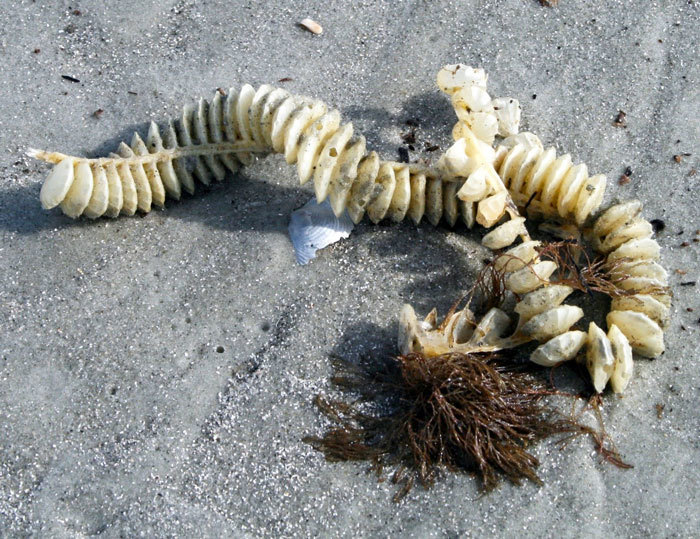
Channeled whelk egg casing. FWC photo by Amanda Nalley.
Egg casings: Another favorite “whoa, what is that” beach moment often comes from finding the egg casings of whelks and moon snails. While these finds aren’t great for decoration (moon snail casings are very fragile, whelk casings and skate egg casings –sometimes called mermaid purses – that have already hatched can be smelly and need to dry out), they are definitely fun to look at and talk about.

Skate egg casing (mermaids purse). FWC photo by Rich Abrams.
Share your seashells and beach finds with us on our social media pages. Learn more at MyFWC.com/News/Social.
Send your questions, photos and fishing tales to Saltwater@MyFWC.com. Make sure your photo meets our photo requirements by visiting MyFWC.com/Fishing and clicking on “Saltwater Fishing” then “Submit Photo.”
The quarterly Gone Coastal column is one of many ways the FWC Division of Marine Fisheries Management is helping recreational anglers understand complex saltwater regulations and learn more about saltwater fishing opportunities and issues in Florida. We are also available to answer questions by phone or email anytime, and we would love the opportunity to share information through in-person presentations with recreational or commercial fishing organizations. To contact the FWC’s Regulatory Outreach subsection, call 850-487-0554 or email Saltwater@MyFWC.com.

